Flat Roof Insulation & Covering
During our tenure of the building the Flat Roof has been upgraded twice, in 2008 and 2022.
The 2022 Upgrade
In October 2022 the Flat Roof was upgraded from a COLD Flat Roof to a WARM Flat Roof. This was achieved by adding a 118mm insulation layer over the existing (2008) insulation and boards. The doubled up arrangement has raised the roof and improved the overall u-value of the roof from .15 to 0.8. The significantly improved insulation is primary aimed at keeping us cooler in summer as global temperatures rise, but also reducing our heating costs in winter.
The R-value and U-values of the Flat Roof (PDF) as at October 2022.
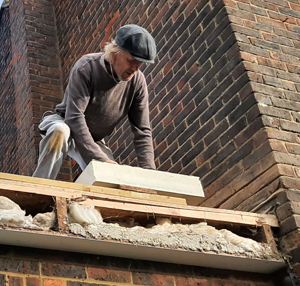 |
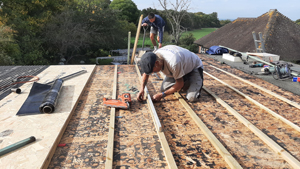 |
 |
|
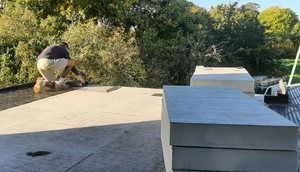 |
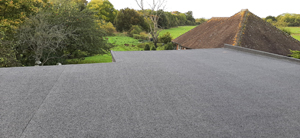 |
The 2008 Upgrade
This 30 year old flat roof was in reasonable condition but had been poorly insulated and the lounge and kitchen underneath were cold in winter, loosing us money and contributing a relevant percentage to our carbon footprint. Having debated and researched for years on how best to insulate the roof, Parity Eco Solutions were commissioned to provide an Energy Options Report for The Cottage, part of which recommended insulating the flat roof by removing the covering, filling with the insulation material and re-covering it .
For environmental reasons, Warmcel 100 was selected for the insulation material due to its outstanding environmental credentials, ease of application and cost. The local contractor who had previously done work on the roof 15 years earlier was chosen to do the work.Apart from the insulation material, the original loose chippings covering the roof were re-used on our driveway and the original fibreglass insulation was re-used on top of the Warmcel 100 when we started to run short of Warmcel.
One tip for a Flat Roof insulation project like this using Warmcel 100 or Thermafleece. It is best to order more insulation material than anticipated for the job. Our under-estimate of the depth of the space between the joists meant being 5 insulation bags short (or just £50), which is insignificant in relation to the labour cost for the job. If we had over-ordered we could have easily sold or Freecycled the surplus.
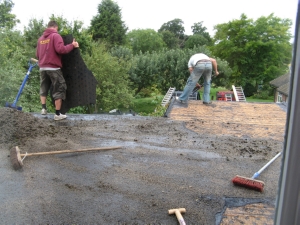 |
 |
| Old cover comes off. Stone chips re-used on driveway | Original insulation + redundant wasp nest |
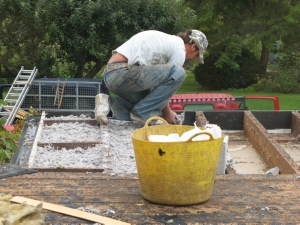 |
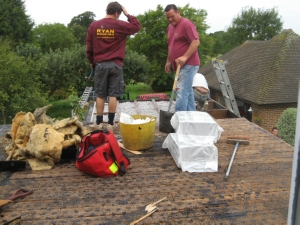 |
| Warmcel starts to be added between the joists | Assessing the spread for the 44 Sq metres |
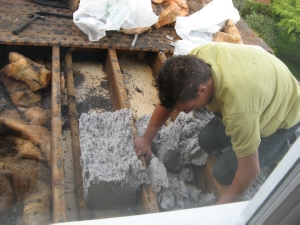 |
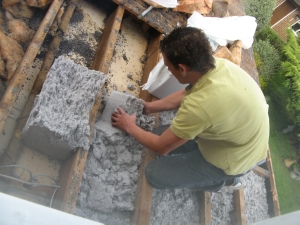 |
| The Warmcel being fluffed up | A 50mm gap left below the joist |
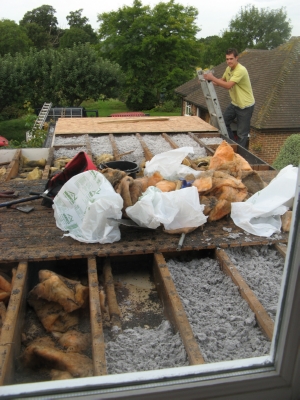 |
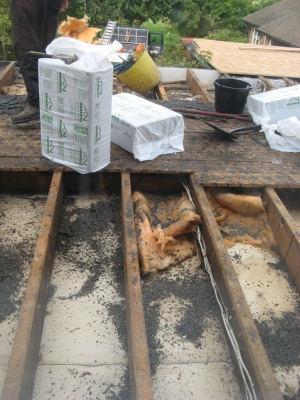 |
| Old insulation removed and Warmcel laid at bottom | Each Warmcel bag is 8Kgs |
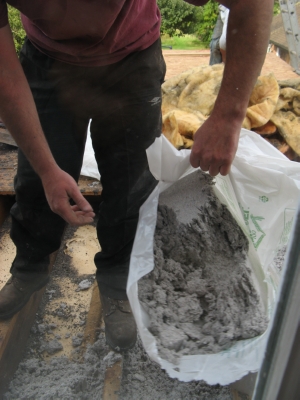 |
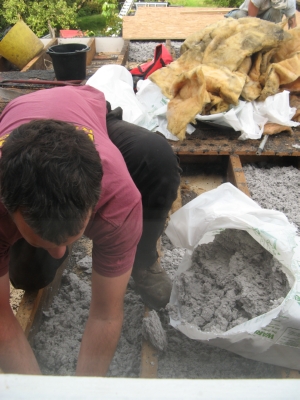 |
| Fluffing | Laying Warmcel to a depth of 130mm |
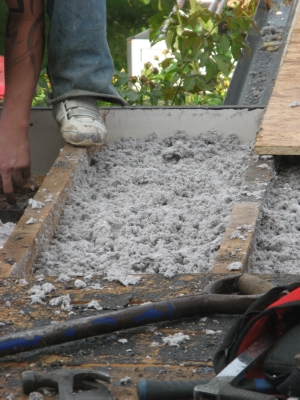 |
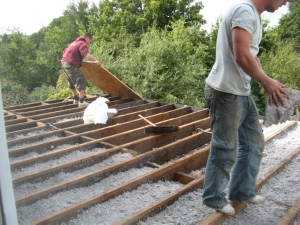 |
| 50 mm gap above Warmcel | Two thirds laid |
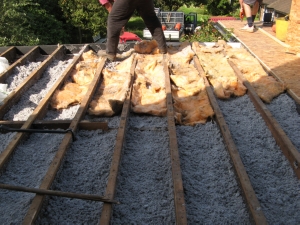 |
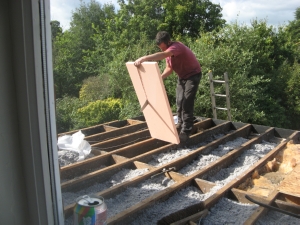 |
| Old fibreglass insulation laid on top of Warmcel | Small Celotex sample added to one joist |
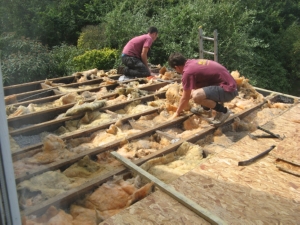 |
 |
| All old insulation was laid on top of Warmcel | When Warmcel runs out, pink coloured fibreglass insulation from main loft was used. |
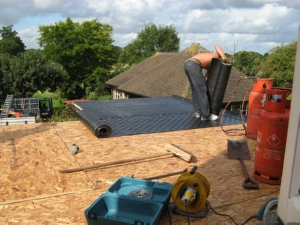 |
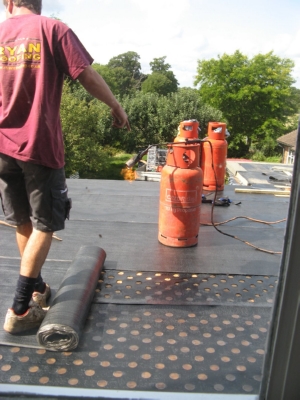 |
| Layer 1 | Layer 2 |
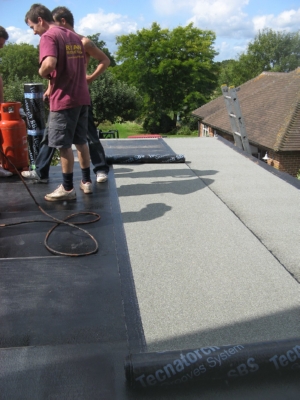 |
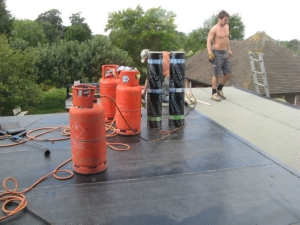 |
| Layer 3 - Top | 4 Vehicles, 6 men, 6.5 hours to complete |
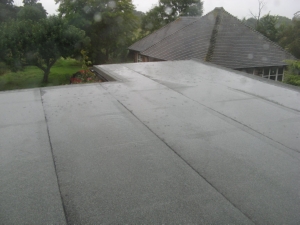 |
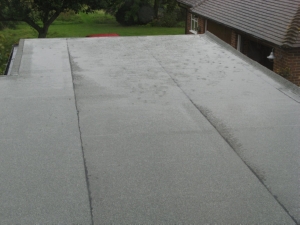 |
| First rain test | Slight pooling over utility area |
